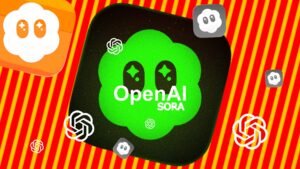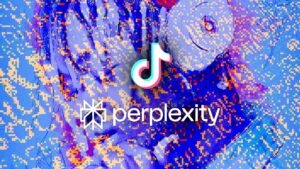Generative AI, represented by powerful applications like ChatGPT, image generators such as Stable Diffusion and Adobe Firefly, and game rendering techniques like NVIDIA DLSS 3 Frame Generation, is driving a transformative era in computing. Its impact spans across productivity, content creation, gaming, and various other domains.

NVIDIA and Microsoft Unleash the Power of Generative AI on Windows PCs
During the Microsoft Build developer conference, NVIDIA and Microsoft jointly showcased a range of advancements in Windows 11 PCs and workstations equipped with NVIDIA RTX GPUs to meet the growing demands of generative AI. With over 400 Windows apps and games already utilizing AI technology, accelerated by the dedicated Tensor Cores found in RTX GPUs, the latest announcements empower developers to construct the next generation of Windows applications with generative AI at the core.
Pavan Davuluri, Corporate Vice President of Windows Silicon and System Integration at Microsoft, emphasized the significant role AI will play in driving innovation for Windows customers in the upcoming years. Collaborating with NVIDIA on both hardware and software optimizations, Microsoft aims to provide developers with a transformative, high-performance, and easily deployable AI experience.
Related: Microsoft Appeals Britain’s Block on $69 Billion Activision Blizzard Takeover
In the realm of AI development, Linux has traditionally been the preferred platform, necessitating developers to either dual-boot their systems or rely on multiple PCs to access the vast Windows ecosystem while working in their AI development environment. However, Microsoft has been diligently developing a robust capability called Windows Subsystem for Linux (WSL), which enables the direct execution of Linux within the Windows OS. NVIDIA has closely collaborated with Microsoft to deliver GPU acceleration and complete support for the NVIDIA AI software stack within WSL. Consequently, developers can now utilize Windows PCs for all their local AI development requirements, including GPU-accelerated deep learning frameworks on WSL.
By leveraging the ample memory capacity of NVIDIA RTX GPUs, which can deliver up to 48GB of RAM in desktop workstations, developers gain access to models on Windows that were previously limited to servers. The increased memory also enhances the performance and quality of local fine-tuning of AI models, allowing designers to customize them according to their own style and content. Furthermore, since the same NVIDIA AI software stack is compatible with NVIDIA data center GPUs, developers can seamlessly transition their models to Microsoft Azure Cloud for large-scale training runs.
Once models are trained, developers need to optimize and deploy AI on target devices. Microsoft has introduced the Microsoft Olive toolchain for optimizing and converting PyTorch models to ONNX, enabling developers to tap into GPU hardware acceleration, such as RTX Tensor Cores, automatically. Through Olive and ONNX, developers can optimize models and deploy Tensor Core-accelerated models on PCs or in the cloud. Microsoft continues to invest in seamless integration between PyTorch, related tools, frameworks, and WSL, providing the best AI model development experience.
Inference performance is crucial for generative AI models once they are deployed. RTX Tensor Cores offer up to 1,400 Tensor TFLOPS for AI inferencing. NVIDIA has dedicated efforts to enhance DirectML performance, fully capitalizing on RTX hardware capabilities. The latest optimizations in the Release 532.03 drivers, released on May 24, in conjunction with Olive-optimized models, yield substantial AI performance improvements. With the new driver, an Olive-optimized version of the Stable Diffusion text-to-image generator demonstrates over 2x performance improvement.
Considering the increasing integration of AI in nearly every Windows application, delivering efficient inference performance is paramount, especially for laptops. NVIDIA plans to introduce Max-Q low-power inferencing specifically for AI workloads on RTX GPUs in the near future. This feature optimizes Tensor Core performance while minimizing GPU power consumption, thus extending battery life and maintaining a cool and quiet system. The GPU can dynamically scale up for maximum AI performance when the workload demands it.
Leading software developers such as Adobe, DxO, ON1, and Topaz have already integrated NVIDIA AI technology into more than 400 Windows applications and games, optimizing them for RTX Tensor Cores. These collaborations have yielded substantial improvements in AI model performance and enhanced user experiences.
In conclusion, NVIDIA and Microsoft offer various resources for developers to explore and test top generative AI models on Windows PCs. An Olive-optimized version of the Dolly 2.0 large language model is available on Hugging Face, while a PC-optimized version of NVIDIA NeMo large language model for conversational AI will be released soon. Developers can also visit the NVIDIA AI for accelerating applications developer site to learn how to fully optimize their applications and leverage GPU acceleration.
The complementary technologies of Microsoft’s Windows platform and NVIDIA’s dynamic AI hardware and software stack empower developers to rapidly and seamlessly develop and deploy generative AI on Windows 11. To learn more about shaping the future of work with AI, tune into the Microsoft Build conference running through Thursday, May 25.







Welcome to our comments section!
We value your feedback and encourage you to share your thoughts in the comment section. Let’s keep the conversation meaningful, respectful, and inclusive.
For the best user experience, commenting is closed after an article has been posted for seven days. Please ensure your comments align with our Community Guidelines.